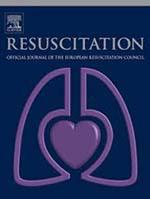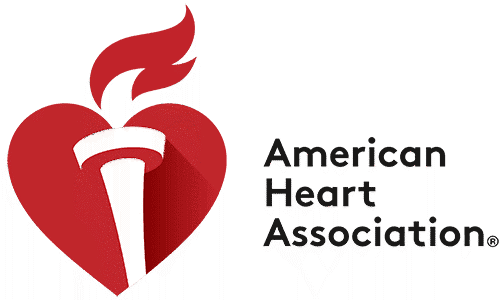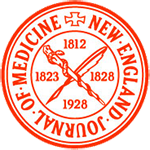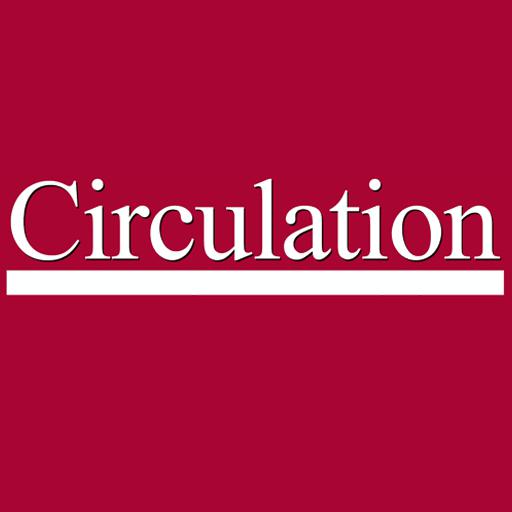Research
Reports and Research

Authors
Charles W. Hwang, Anthony J. Meyer, Ira Harmon, Brandon P. Climenhage, Eric M. Nordhues and Torben K. Becker (December 18, 2025)
Findings
OHCA is a common condition that is time-sensitive and requires urgent resuscitation. Early CPR and defibrillation help to restore perfusion and improve the likelihood of favorable survival and neurological outcome. One strategy to improve time-to-intervention is the use of crowd-sourcing mobile CPR applications such as PulsePoint. The data from our urban EMS experience demonstrate that PulsePoint implementation was associated with substantially higher bystander CPR rates, emphasizing its importance in cardiac arrest care.

Authors
Tanner Smida, Jessica Salerno, Leonard Weiss, Christian Martin-Gill, David D. Salcido (November 11, 2021)
Findings
PulsePoint dispatches were associated with prognostically favorable OHCA characteristics and increased bystander CPR performance.

Author
American Heart Association
7272 Greenville Avenue
Dallas, TX 75231
Findings
Emergency dispatch systems should alert willing bystanders to nearby events that may require CPR or AED use through mobile phone technology. Despite the recognized role of lay rescuers in improving OHCA outcomes, most communities experience low rates of bystander CPR and AED use. Mobile phone technology, such as text messages and mobile phone apps, is available to summon trained members of the general public to nearby events to assist in CPR and to direct those responders to the nearest AED. Notification of lay rescuers via a mobile phone app results in improved bystander response times, higher bystander CPR rates, shorter time to defibrillation, and higher rates of survival to hospital discharge.

Title
PulsePoint Report Utilizing CARES 2018 & 2019 Data
Author
Cardiac Arrest Registry to Enhance Survival (C.A.R.E.S)
Woodruff Health Sciences Center
Atlanta, Georgia
Findings
An analysis of PulsePoint agencies who were also CARES participants for all of 2018 and 2019 showed that PulsePoint communities performed better in all indicated CARES performance measures.

Title
Mobile Smartphone Technology Is Associated With Out‐of‐hospital Cardiac Arrest Survival Improvement
Authors
Clement Derkenne, MD, Daniel Jost, MD, Florian Roquet, MD, Paul Dardel, MD, Romain Kedzierewicz, MD, Alexandre Mignon, MD, PhD, Stephane Travers, MD, PhD, Benoit Frattini, MD, Laurent Prieux, MD, Emmanuel Rozenberg, MD, Xavier Demaison, MD, John Gaudet, MD, PhD, Felicite de Charry, MD, Olivier Stibbe, MD, Frederique Briche, MD, Frederic Lemoine, Xavier Lesaffre, Olga Maurin, Eric Gauyat, Eric Faraon, Sabine Lemoine, and Bertrand Prunet, MD, PhD and the Bon Samaritain Task Force, Paris Fire Brigade Cardiac Arrest Task Force (May 23, 2020)
Findings
After adjustment for confounders, survival at hospital discharge was significantly improved for patients in the intervention group (35% vs. 16%, adjusted odds ratio = 5.9, 95% confidence interval = 2.1 to 16.5, p < 0.001). All CPR metrics were improved in the intervention group.

Title
Mobile-Phone Dispatch of Laypersons for CPR in Out-of-Hospital Cardiac Arrest
Authors
Mattias Ringh, M.D., Mårten Rosenqvist, M.D., Ph.D., Jacob Hollenberg, M.D., Ph.D., Martin Jonsson, B.Sc., David Fredman, R.N., Per Nordberg, M.D., Hans Järnbert-Pettersson, Ph.D., Ingela Hasselqvist-Ax, R.N., Gabriel Riva, M.D., and Leif Svensson, M.D., Ph.D. (June 11, 2015)
Findings
A mobile-phone positioning system to dispatch lay volunteers who were trained in CPR was associated with significantly increased rates of bystander-initiated CPR among persons with out-of-hospital cardiac arrest.
Integration of mobile-phone positioning systems with AED registries may facilitate lay responders in locating the nearest AED and thereby increase efficacy in public-access defibrillation programs.
Almost 10,000 people voluntarily joined the program without any financial compensation, and no major adverse events were reported.

Authors
Caputo Maria Luce, Muschietti Sandro, Burkart Roman, Benvenuti Claudio, Conte Giulio, Regoli François, Mauri Romano, Klersy Catherine, Moccetti Tiziano, Auricchio Angel (March 4, 2017)
Findings
The mobile app system is highly efficient in the recruitment of first responders, significantly reducing the time to the initiation of CPR thus increasing survival rates.

Authors
Angelo Auricchio, Lorenzo Gianquintieri, Roman Burkart, Claudio Benvenuti, Sandro Muschietti, Stefano Peluso, Antonietta Mira, Tiziano Moccetti, Maria Luce Caputo (May 19, 2019)
Findings
The dispatch of lay first responders directly to the OHCA site instead of first retrieving the AED, significantly decreases the time to CPR initiation.

Title
A text message alert system for trained volunteers improves out-of-hospital cardiac arrest survival
Authors
Ruud W.M. Pijls, Patty J. Nelemans, Braim M. Rahel, Anton P.M. Gorgels (June 8, 2016)
Findings
The text message alert system is effective in increasing survival to hospital discharge in OHCA victims and the degree of disability or dependence after survival is low.

Authors
John S. Rumsfeld, Steven C. Brooks, Tom P. Aufderheide, Marion Leary, Steven M. Bradley, Chileshe Nkonde-Price, Lee H. Schwamm, Mariell Jessup, Jose Maria E. Ferrer, Raina M. Merchant (August 23, 2016)
Findings
Digital strategies represent novel interventions to potentially improve care delivery and patient outcomes for emergency cardiovascular conditions.

Title
Early Cardiopulmonary Resuscitation in Out-of-Hospital Cardiac Arrest
Authors
Ingela Hasselqvist-Ax, R.N., Gabriel Riva, M.D., Johan Herlitz, M.D., Ph.D., Mårten Rosenqvist, M.D., Ph.D., Jacob Hollenberg, M.D., Ph.D., Per Nordberg, M.D., Ph.D., Mattias Ringh, M.D., Ph.D., Martin Jonsson, B.Sc., Christer Axelsson, R.N., Ph.D., Jonny Lindqvist, M.Sc., Thomas Karlsson, B.Sc., and Leif Svensson, M.D., Ph.D. (June 11, 2015)
Findings
CPR performed before EMS arrival was associated with a 30-day survival rate after an out-of-hospital cardiac arrest that was more than twice as high as that associated with no CPR before EMS arrival.

Title
Lay Responder Care for an Adult with Out-of-Hospital Cardiac Arrest
Authors
William J. Brady, M.D., Amal Mattu, M.D., and Corey M. Slovis, M.D. (December 5, 2019)
Findings
While instructions are being relayed by telephone, the dispatcher can alert others in the community about the cardiac arrest through text messaging and other smartphone-based applications. This approach notifies lay responders who have voluntarily agreed to join these digital response efforts of an occurrence of out-of-hospital cardiac arrest in their immediate vicinity, provides information about the arrest and location, and, in some cases, alerts them to the presence of adjacent public-access AEDs. Although this is a new strategy, early investigations are promising; studies have shown increased frequency of early CPR and associated improved survival and functional status among survivors. This strategy is formally supported by the AHA.

Title
Bystander Efforts and 1-Year Outcomes in Out-of-Hospital Cardiac Arrest
Authors
Kristian Kragholm, M.D., Ph.D., Mads Wissenberg, M.D., Ph.D., Rikke N. Mortensen, M.Sc., Steen M. Hansen, M.D., Carolina Malta Hansen, M.D., Ph.D., Kristinn Thorsteinsson, M.D., Ph.D., Shahzleen Rajan, M.D., Freddy Lippert, M.D., Fredrik Folke, M.D., Ph.D., Gunnar Gislason, M.D., Ph.D., Lars Køber, M.D., D.Sc., Kirsten Fonager, M.D., Ph.D., et al. (May 4, 2017)
Findings
Bystander CPR and defibrillation were associated with risks of brain damage or nursing home admission and of death from any cause that were significantly lower than those associated with no bystander resuscitation.

Title
Strategies to Improve Cardiac Arrest Survival: A Time to Act
Authors
Robert Graham, Chair, Mickey Eisenberg, Vice Chair (June 30, 2015)
Findings
The immediate, hands-on response of bystanders to cardiac arrest is critical to improve rates of effective resuscitation and, thereby, increase the likelihood of survival and positive neurologic outcomes for out-of-hospital cardiac arrest.
Bystander CPR makes the next link in the chain of survival, early defibrillation, more effective by increasing the proportion of individuals who are found with a shockable rhythm.
Many national and international registry studies indicate that bystander CPR can increase survival rates for OHCA between 50 and 500 percent.
Theoretically, a member of the public could be sued for providing bystander CPR; however, the committee is unaware of any successful suit of this type.
Use of PulsePoint is discussed on Pg. 160-161.